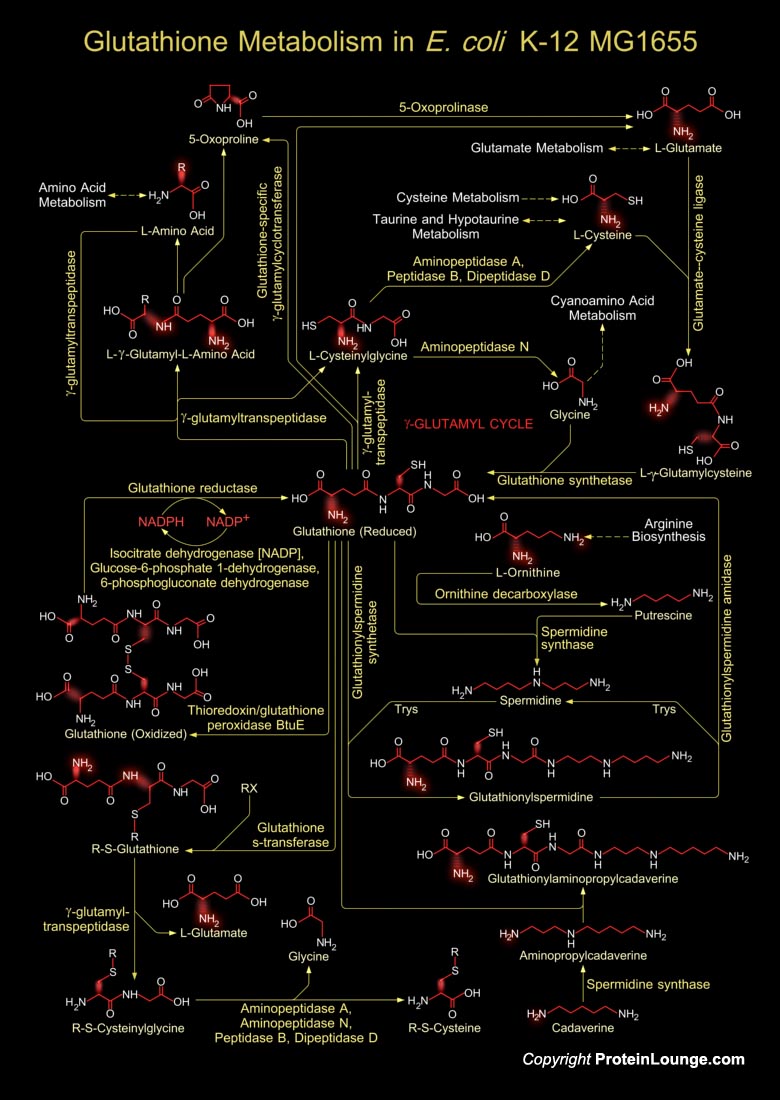
Glutathione is a sulfhydryl (-SH) antioxidant, antitoxin, and enzyme cofactor. It is ubiquitous in animals, plants, and microorganisms, and being water soluble is found mainly in the cell cytosol and other aqueous phases of the living system. Glutathione is a tripeptide composed of Glutamate, Cysteine and Glycine that has numerous important functions within cells. It is homeostatically controlled, both inside the cell and outside and often attains millimolar levels inside cells, which makes it one of the most highly concentrated intracellular antioxidants. Glutathione exists in two forms. The antioxidant "reduced Glutathione" tripeptide is conventionally called Glutathione and abbreviated Gsh; the oxidized form is a sulfur-sulfur linked compound, known as[..]
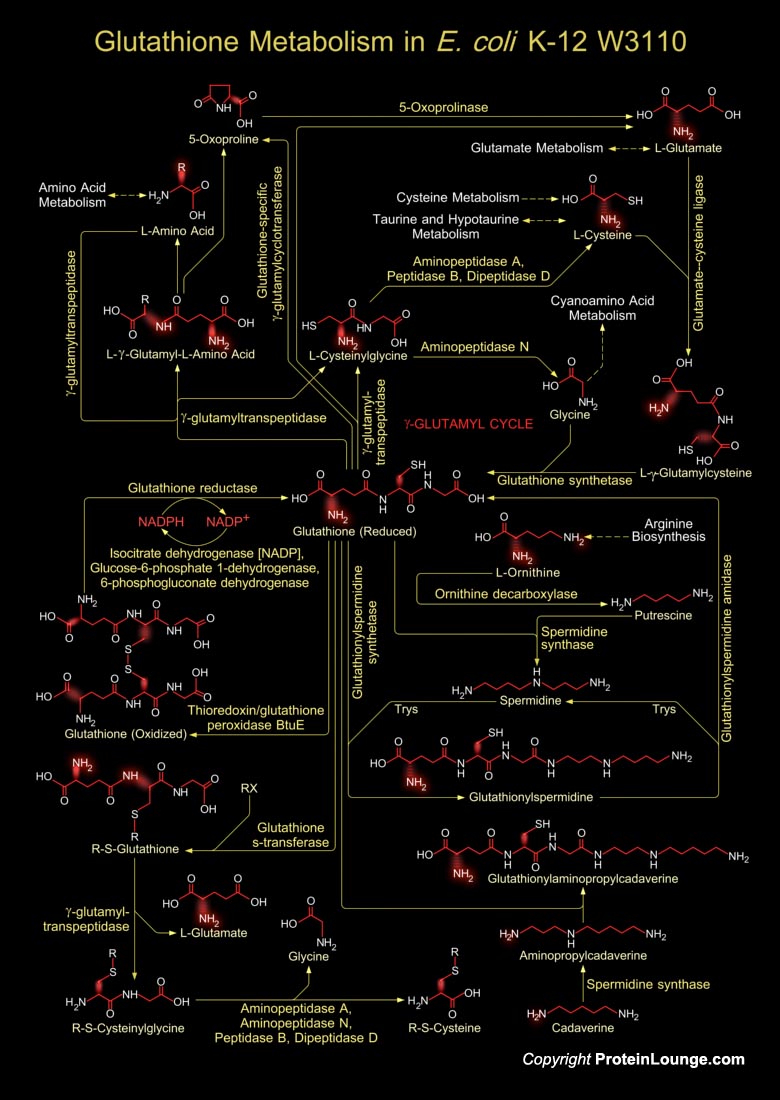
Glutathione is a sulfhydryl (-SH) antioxidant, antitoxin, and enzyme cofactor. It is ubiquitous in animals, plants, and microorganisms, and being water soluble is found mainly in the cell cytosol and other aqueous phases of the living system. Glutathione is a tripeptide composed of Glutamate, Cysteine and Glycine that has numerous important functions within cells. It is homeostatically controlled, both inside the cell and outside and often attains millimolar levels inside cells, which makes it one of the most highly concentrated intracellular antioxidants. Glutathione exists in two forms. The antioxidant "reduced Glutathione" tripeptide is conventionally called Glutathione and abbreviated Gsh; the oxidized form is a sulfur-sulfur linked compound, known as[..]

BRs (Brassinosteroids) are Plant Steroid Hormones that influence a wide range of important Developmental and Physiological processes, including Regulation of Gene Expression, Cell Division and Expansion, Differentiation, Programmed Cell Death, and Homeostasis. The regulation of these processes by BRs, acting together with other plant hormones, leads to the promotion of Stem Elongation and Pollen tube Growth, Leaf Bending and Epinasty, Root Growth Inhibition, Proton-Pump Activation, and Xylem Differentiation. The pathways of BR biosynthesis have been elucidated by a series of detailed biochemical studies. The biosynthetic pathway to BL (Brassinolide), the biologically most active BR, can be divided into General Sterol Synthesis (Cycloartenol to Campesterol), and the[..]
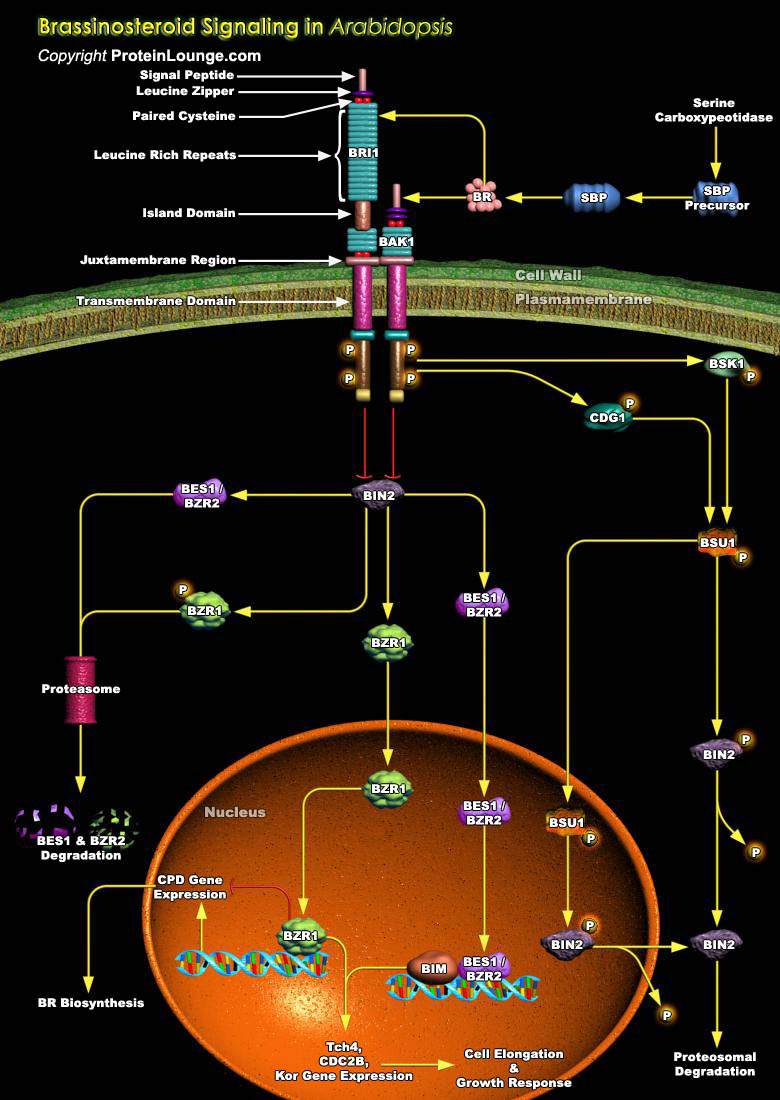
Plant growth and development are ruled by environmental and endogenous signals, which are integrated through genetic networks that finally act on the division, expansion, and differentiation of cells to generate specific developmental patterns. BRs (Brassinosteroids) are steroid hormones belonging to the group of endogenous signals required for plant growth and organogenesis, controlling processes such as Cell Expansion, Vascular Differentiation, Etiolation and Reproductive Development. In addition to a role in Plant growth and development, BR has been also implicated in the modulation of Plant Stress Responses, including Enhancement of Chilling, Thermo, Salt-tolerance and Protection of Plant from the Mild Drought Injury and Pathogen Attack. Plants those are[..]
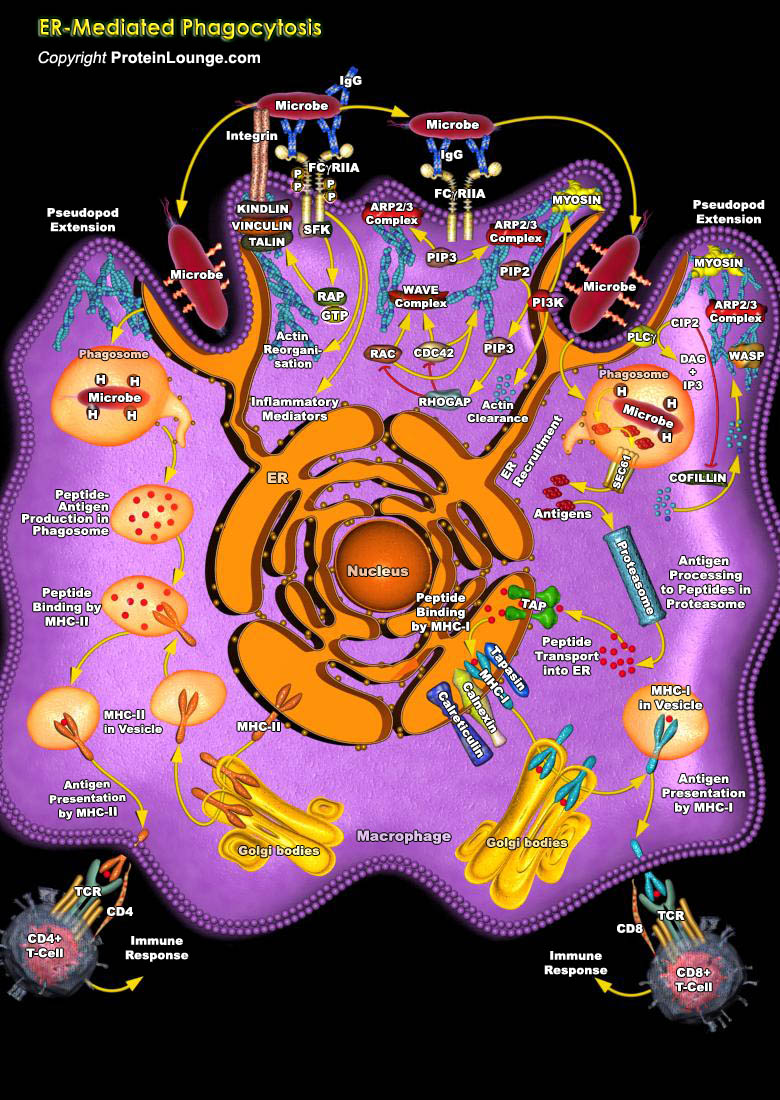
Phagocytosis, defined as the cellular uptake of particulates (>0.5 m) within a plasma-membrane envelope, is closely related to and partly overlaps the endocytosis of soluble ligands by fluid-phase macropinocytic and receptor pathways. The uptake of exogenous particles (heterophagy) has features in common with autophagy, an endogenous process of sequestration and lysosomal disposal of damaged intracellular organelles. There is a spectrum of uptake mechanisms depending on the particle size, multiplicity of receptor-ligand interactions, and involvement of the cytoskeleton. Once internalized, the phagosome vacuole can fuse selectively with primary lysosomes or the product of the endoplasmic reticulum (ER) and Golgi complex, to form a secondary phagolysosome. This pathway[..]
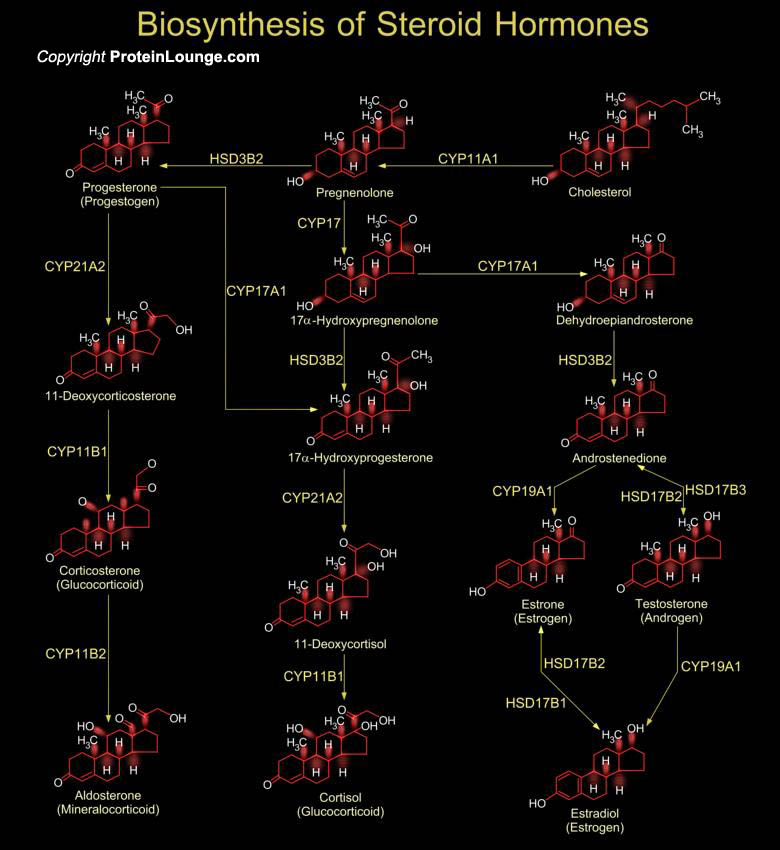
Steroid hormones are crucial substances for the proper functioning of the body. They mediate a wide variety of vital physiological functions ranging from anti-inflammatory agents to regulating events during pregnancy. Typically, endocrinologists classify steroid hormones into five major groups, based primarily on the receptor to which they bind, and the physiological outcomes: (i)Glucocorticoids: Anti-Stress Hormones which include cortisol, (ii)Mineralocorticoids: major Ion Uptake Regulators which include aldosterones, (iii)Androgens: Primarily male Sex Hormones such as Androstenedione and Testosterone, (iv)Estrogens: Female Sex Hormones including Estrodiol and Estrone and (v)Progestogens: progestational hormones, such as Progesterone. The steroid hormones are[..]
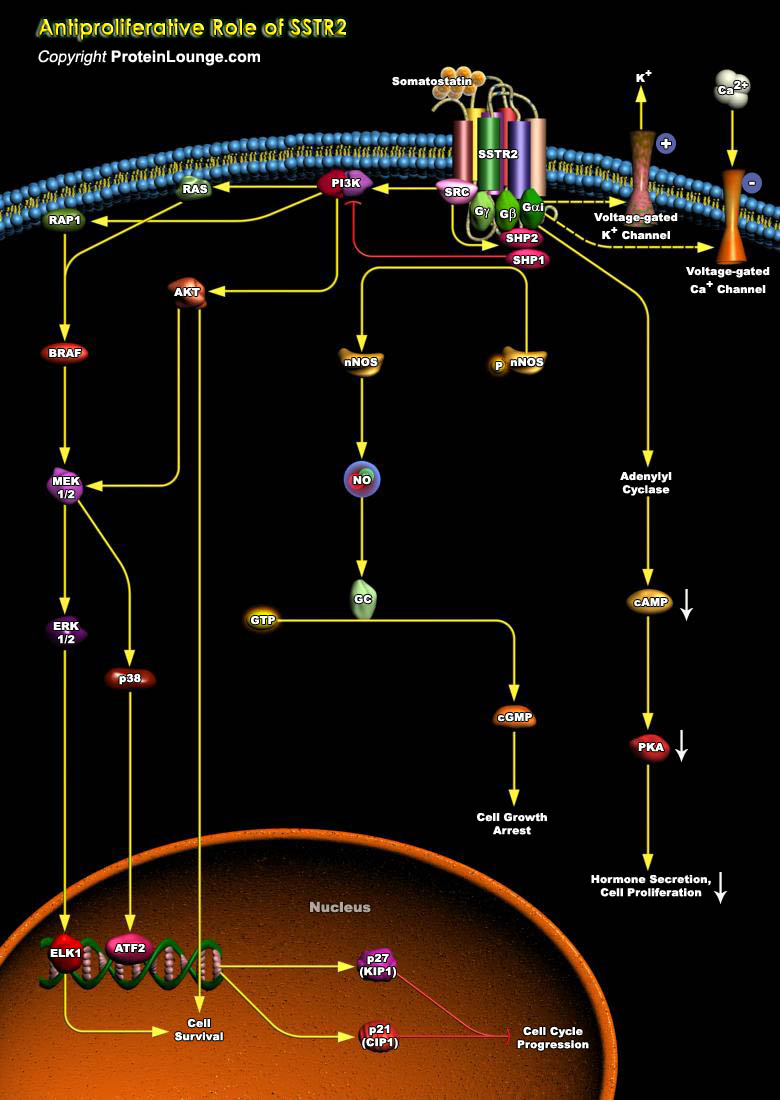
Somatostatin is a widely distributed peptide hormone that plays an important inhibitory role in several biological processes, including neurotransmission, exocrine and endocrine secretions, and cell proliferation (Ref.1). Somatostatin acts via a family of five GPCRs (G-Protein-Coupled Receptors) SSTR1-SSTR5 (Somatostatin Receptors) that are variably expressed throughout numerous tissues ranging from the CNS (Central Nervous System) to the Endocrine and Immune Systems. Somatostatin antiproliferative action results either from inhibition of trophic or growth factors secretion or from interference with the normal Cell Cycle Progression. Among the five Somatostatin receptors, SSTR2 (Somatostatin Receptor-2) plays a critical role in the negative control of normal and Tumor[..]
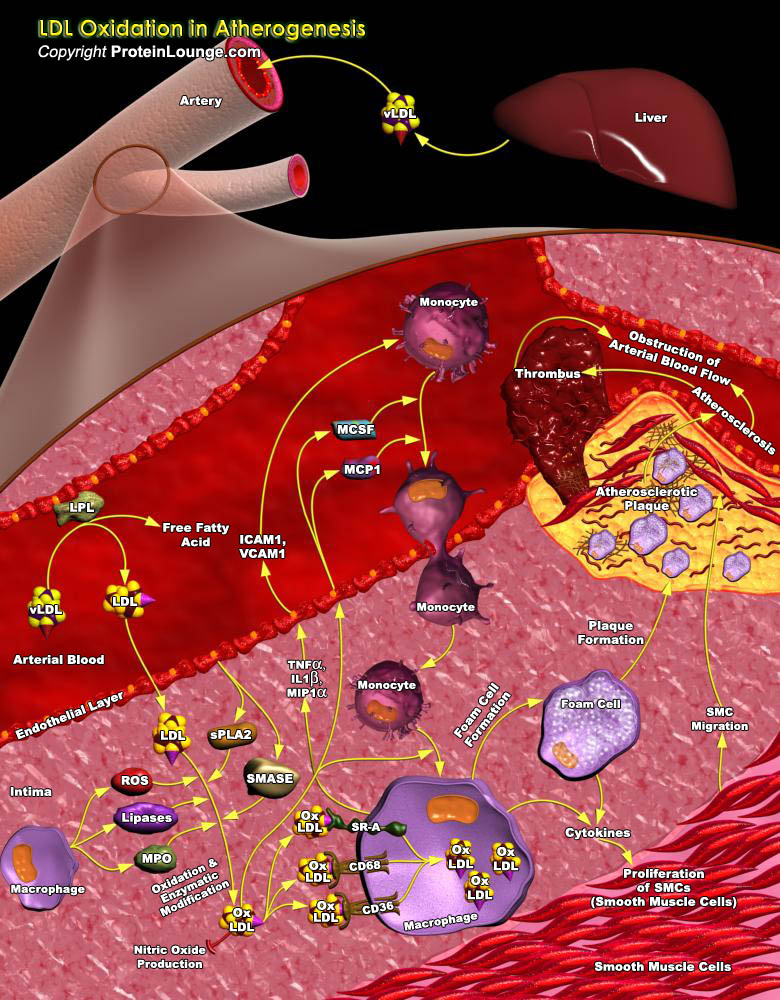
Atherosclerosis, a chronic inflammatory disease of the arterial wall, is the major cause of morbidity and mortality from CVD (Cardiovascular Disease) in much of the world’s population. The disease involves the formation of Plaques in arterial walls that narrow the arterial passage, restricting blood flow and increasing the risk of occlusion of blood flow by a myocardial infarction. There is now a consensus that Atherosclerosis represents a state of heightened oxidative stress characterized by lipid and protein oxidation in the vascular wall. The Oxidative Modification hypothesis predicts LDL (Low-Density Lipoproteins) oxidation as an early event in Atherosclerosis, and oxidized LDL as one of the important contributors of Atherogenesis (Ref.1, 2 &[..]
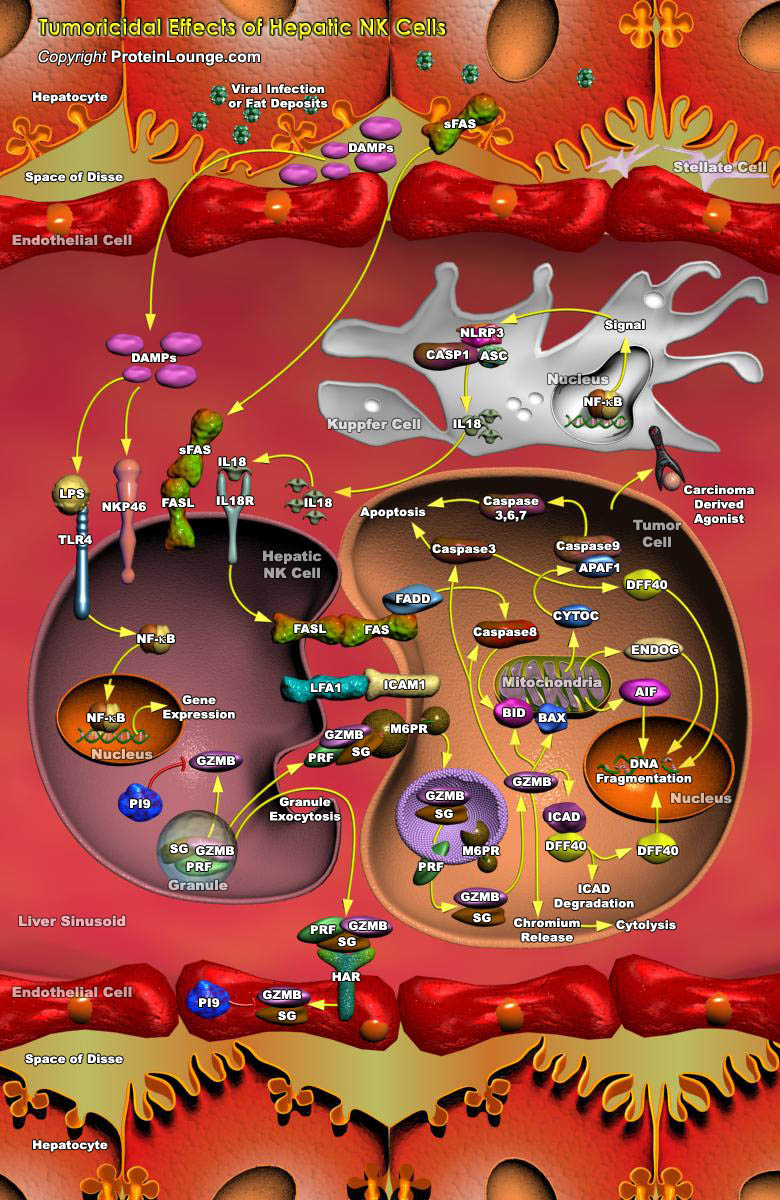
The liver is a major site for the formation and metastasis of Tumors. Malignant Liver Tumors fall into two types: Primary and Metastatic. While Primary Liver tumors such as HCC (Hepatocellular Carcinoma) originate in the liver itself, Metastatic or Secondary Liver Tumors commpnly known as “Liver Metastases” are cancerous tumors that originate at sites remote from the liver and spread to the liver via the bloodstream. As filtration of blood is one of the main functions of Liver, cancer cells from other parts of the body have easy access to the Liver. It provides a fertile platform in which Metastases can establish, not only because of its rich, dual blood supply but also because of humoral factors that promote cell growth. Metastasis is the most common neoplasm in[..]

DRPLA (Dentatorubropallidoluysian Atrophy) is a Rare Neurodegenerative Disorder that usually is inherited in an Autosomal Dominant pattern. The Clinical symptoms are variable depending on the age of onset of the disease Myoclonus, Epilepsy, and Mental Retardation are the main symptoms in Juvenile Onset, whereas Cerebellar Ataxia, Choreoathetosis, and Dementia are seen in Adult Onset. Neuropathologically, a combined degeneration of the Dentatorubral and Pallidoluysian systems is a characteristic feature of DRPLA. The disease is caused by an expansion of a CAG trinucleotide repeat encoding PolyQ (Polyglutamine) in the Atrophin-1 gene, on Chromosome 12 (Ref.1).Atrophin-1, the DRPLA gene product, encodes a Hydrophilic 1184-amino acid protein with several simple repetitive[..]

C. neoformans (Cryptococcus neoformans) is an encapsulated yeast-like basidiomycetous fungus and a significant human pathogen responsible for fungal meningoencephalitis in immune-compromised individuals. It has emerged as a model organism to study the molecular mechanisms of fungal pathogenesis (Ref.1). Desiccated yeast cells or basidiophores of C. neoformans when inhaled can stay in the alveoli of the host causing primary lung infection. On crossing the blood–brain barrier (BBB), these fungal cells can interfere with the brain’s ability to reabsorb cerebrospinal fluid, causing meningo-cephalitis (Ref.2). C. neoformans is generally classified into four serotypes (A to D) with different pathogenic characteristics during host infection. Most commonly[..]
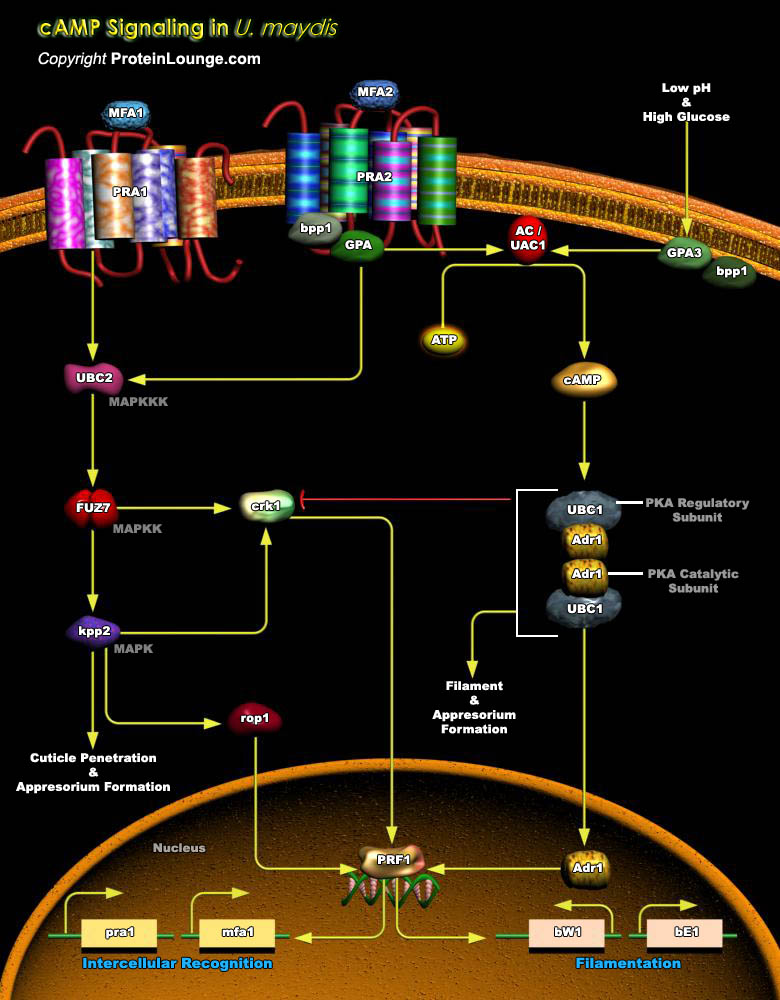
Ustilago maydis (U.maydis) belongs to the phyla Basidiomycetes (smut fungi) that infects maize. Dimorphism is linked to pathogenicity in U.maydis, where the budding haploid cells are saprobic in nature that converts to a dikaryotic filamentous pathogenic form after mating. cAMP signaling pathway regulates the dimorphic transition in U.maydis (Ref.1 and 2). Dimorphism process is regulated by two unlinked mating type loci, a and b. The a locus, a1 and a2, encodes a pheromone based precursors MFA1 and MFA2 and their receptors PRA1 and PRA2, whereas b locus codes for two homeodomain proteins, bE and bW (Ref.3).cAMP and mitogen-activated protein kinase (MAPK) pathways are responsible for the transcription of the a and b gene. The major components of the cAMP-dependent[..]

